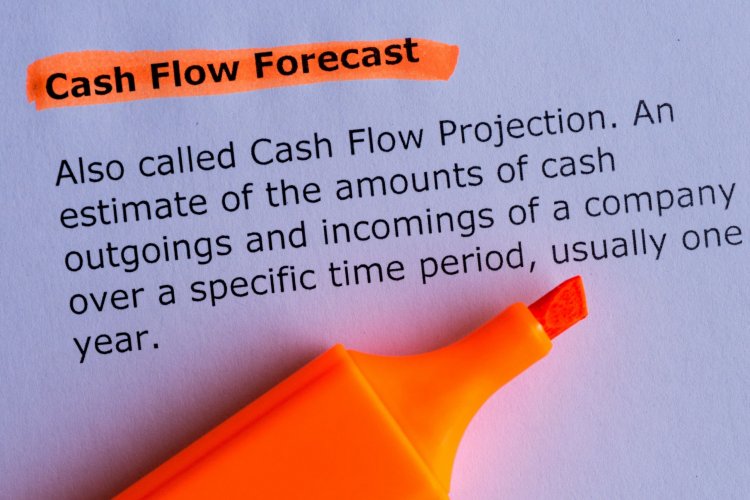The basics of cash flow forecasts for small businesses
By Henry Williams on Small Business UK - Advice and Ideas for UK Small Businesses and SMEs We take a look at the basics of cash flow forecasts for small businesses. By reading it, you’ll have everything you need to get started. The post The basics of cash flow forecasts for small businesses appeared first on Small Business UK.

By Henry Williams on Small Business UK - Advice and Ideas for UK Small Businesses and SMEs

Just as plants need water, businesses need cash to stay healthy. That’s what cash flow is all about – the money flowing through your business – and it’s absolutely vital.
Cash flow forecasting goes hand in hand with any conversation about cash flow. It helps you predict how much cash you might have in the future, so you can plan ahead and make big decisions. Whether you’re looking to expand, get a loan or simply understand how your business is getting on, cash flow forecasts are powerful financial tools.
In this article, we’re going to take a look at the basics of cash flow forecasts for small businesses. By reading it, you’ll have everything you need to get started.
What is cash flow?
In order to learn about forecasting, the first thing you need to understand is cash flow itself. The main thing to remember is that cash flow refers to both the money moving into your business and the money moving out of it.
Cash mainly comes into your business from what you make through sales, but you might also have a loan, a line of credit or a recent tax rebate too. In terms of the cash going out, we’re talking about all the money your business spends: rent, taxes, salaries, along with other expenses like marketing, insurance and more.
Let’s say you run a dry cleaning business, where you earn the bulk of your money through cleaning and alterations. If you’ve just taken out a loan to buy some new equipment, you’ll have the amount you’re borrowing coming in too. Most of the cash going out will probably be used to pay suppliers, staff and your own salary, as well as things like taxes, running costs and loan repayments.
What is a cash flow forecast?
Cash flow forecasts help you calculate how all this money coming and going out might behave in the future. But if you want to build a forecast, you need to know how money has flowed through your business in the past.
So a cash flow forecast for a new business might look different, since it’ll have less financial history, which are the building blocks of a forecast. If you’ve been trading longer, with good financial records, you’ll be in a better position to predict further out.
What does a cash flow forecast show?
Cash flow forecasts are basically detailed spreadsheets. Along the top you’ll have the months of the year, with the rows below dedicated to your income and expenses for each month. You can add in your monthly revenue figures, along with all the money going out, broken down into categories like general expenses and loan repayments, for example.
The most important thing your forecast shows is your net cash flow, which is the difference between the amount of money going out and the amount of money coming in. Your net cash flow shows if your business is earning more cash than it’s burning, or vice versa.
With forecasting software, which can connect to Sage, you can get something more visual, which depicts the peaks and troughs of your cash flow using a line graph.
Why are cash flow forecasts important?
So how can a cash flow forecast help a business? Most of all, they’re great financial barometers, that allow you to see what kind of pressure your business might be under. Plenty of things can cause cash flow problems – from outstanding payments to uncontrolled growth – and forecasting helps you catch those issues early.
When you know what to expect, you can make better decisions. With a cash flow forecast, it’s easier to understand whether you can afford to make that next big hire or invest in a new piece of machinery.
Lenders are interested in this information too. Like payslips for a mortgage, a cash flow forecast helps you prove your business’ performance when you’re looking to borrow.
How to create a cashflow forecast
An easy way to prepare a forecast is to use a cash flow forecast template, which is a readymade spreadsheet. You can find one in Sage’s free small business toolkit
If you’d like to go deeper into forecasts, you can find more detail here. But here are the main things you need to build your own cash flow forecast:
- Your bank balance: Depending on what month you’re starting your forecast, find out what your balance was at the beginning of that month.
- Your income: List out the money coming in each month, using invoices, existing contracts and previous years’ sales figures, along with things like grants and tax refunds.
- Your outgoings: List out everything you spend each month, from rent to salaries to the petrol you put in your van.
If you’re not using software to track your income and outgoings, things can get a little tricky. Find out how Sage can help you keep better digital records, as part of its Making Tax Digital hub.
The post The basics of cash flow forecasts for small businesses appeared first on Small Business UK.






















